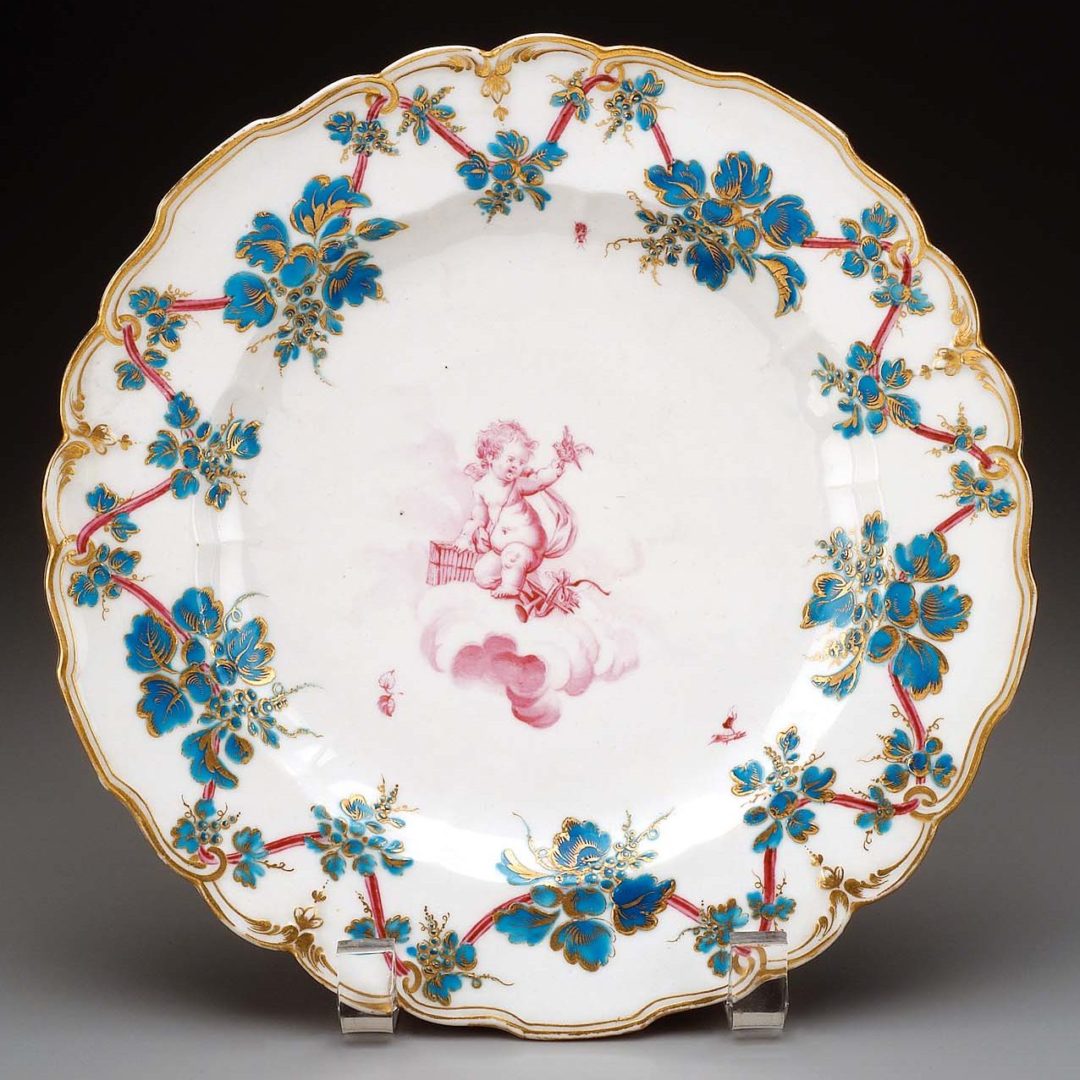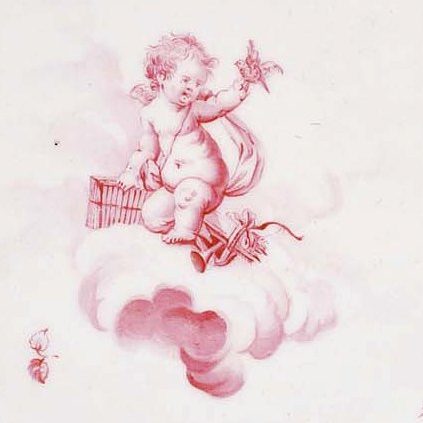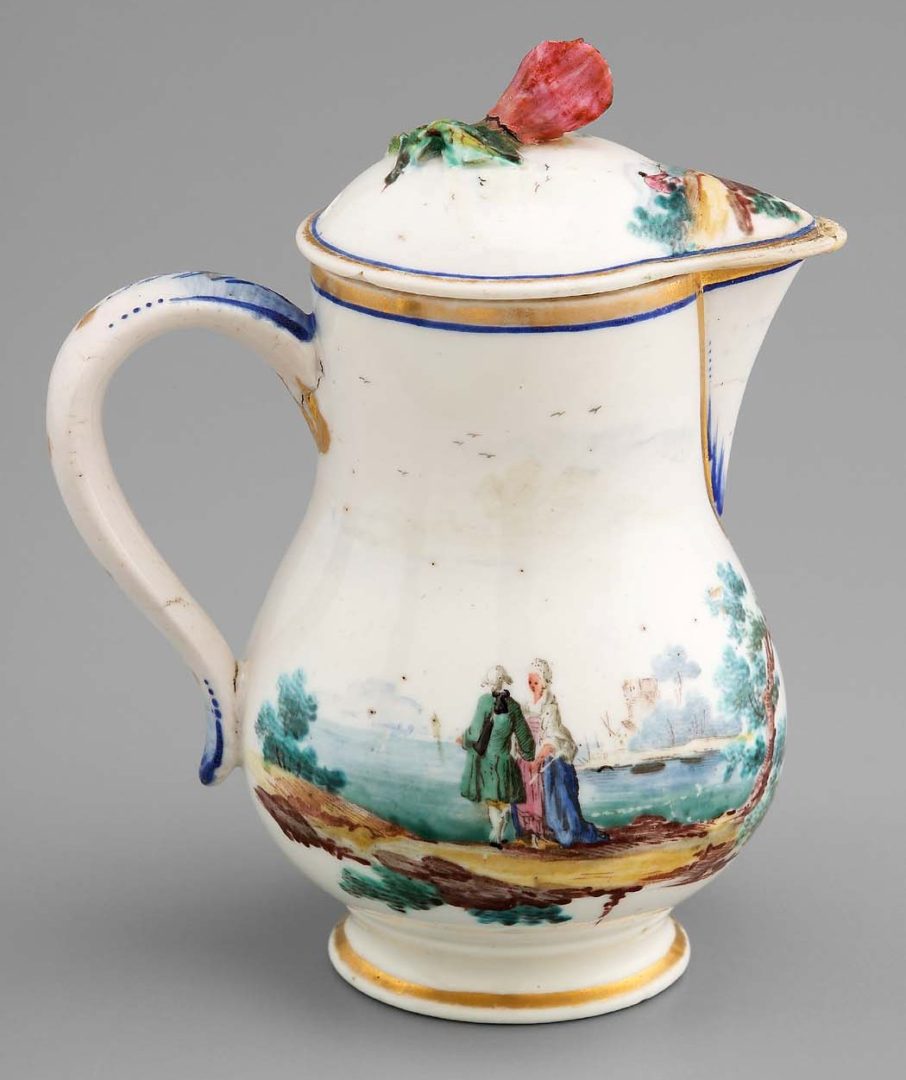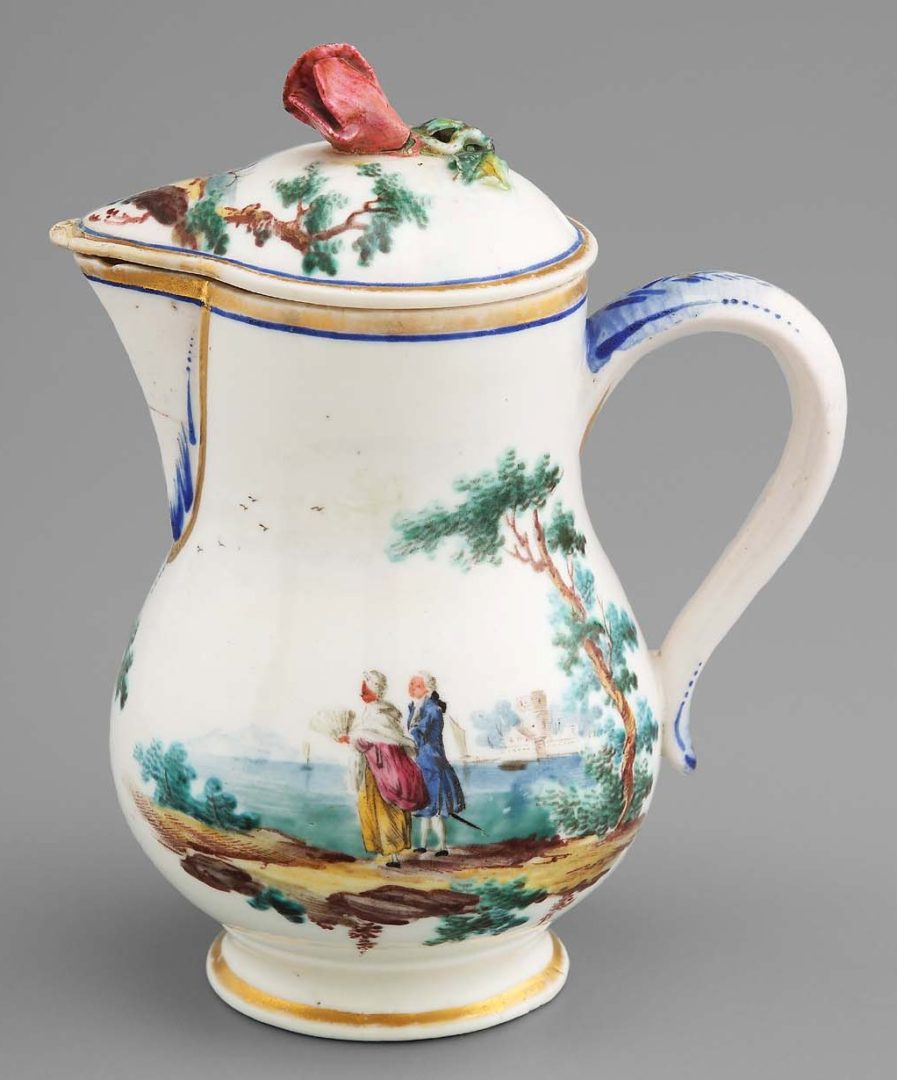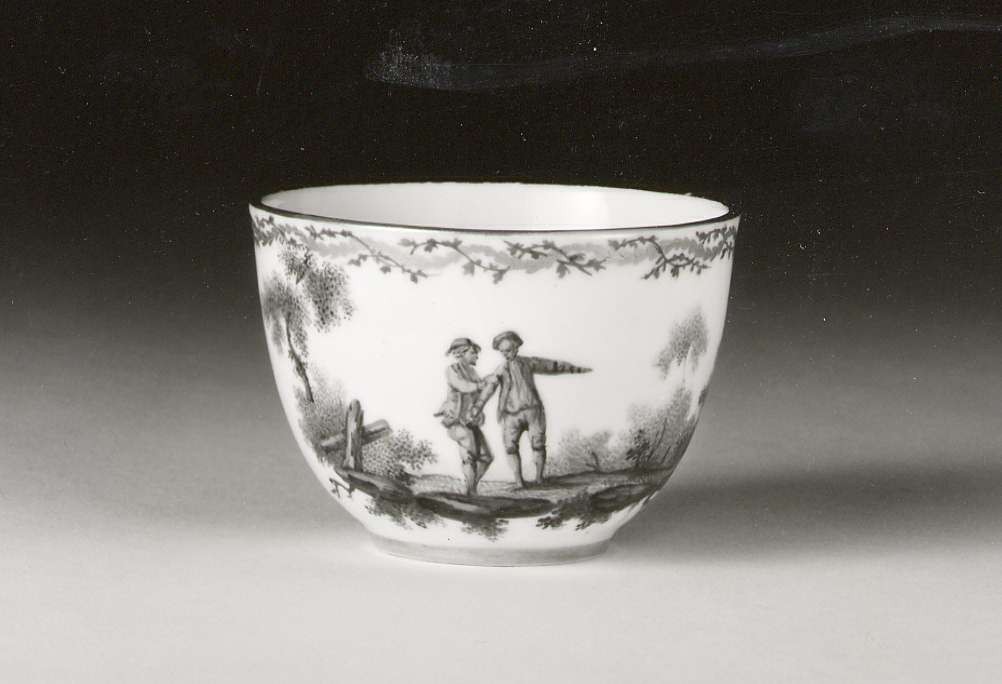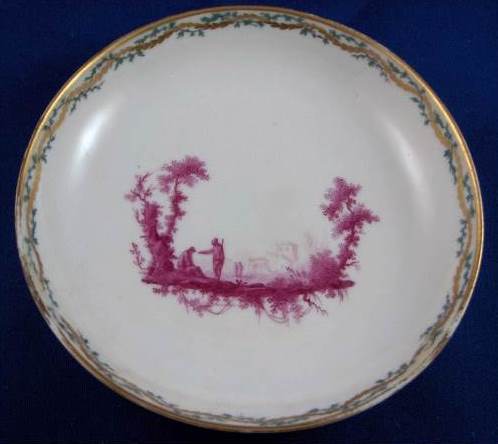As with many other similarly decorated Derby pieces, the cherub painting on this plate has been attributed to the painter Richard Askew (c. 1730-1798). But more recent research by Derby scholar Andrew Ledger has revealed that Askew was not working regularly for Derby during the period 1769 to April 1771. By April 1772 he was living in London, and did not work again for Derby until 1794. (i)
We know that Duvivier signed his contract with Duesbury on 31 October 1769 and worked at Derby until at least mid-1771; and he, too, decorated porcelain with putti in rose camaïeu during that same period. So the next task will be to identify and distinguish his work from that of other hands, including Askew’s.(ii)
My Derby attributions to Duvivier are based on stylistic similarities to the Boucher-inspired decoration he did in France, the Netherlands and in Staffordshire. (See my book, pp. 65-69, and Blogpost #17: “Country togs, angelic faces” of August 15, 2018).
3. A Dutch Loosdrecht hard-paste porcelain teabowl, c. 1783, with two figures in a land-scape, decorated in puce, green enamel and gold by Fidelle Duvivier. H 1 15/16 in. (4.9 cm). Mark: M.O.L. with a star below it in underglaze blue. (Inv. 103.1980 – Rita and Frits Markus Collection)(iv)
This tea canister belonged to a New Hall porcelain tea and coffee service Duvivier painted with scenes of children’s games and occupations.(v) Visible in the distance behind the children playing leapfrog are a beehive kiln and ceramic factory. A matching teapot from this service (whereabouts unknown) was last pictured in a 1925 Sotheby’s advertisement in The Connoisseur Magazine.(vi)
Several New Hall porcelain cups with the same gilded pattern on their inner rims are in the collections of the Wardown Park Museum, Luton, and Museum of Scotland.(vii)
NOTES
(i) Andrew Ledger, “Richard Askew, Derby painter: Unsafe Attributions,” Transactions of the English Ceramic Circle, Vol. 22, 2011, pp. 39-45. The author published his findings after examining Derby payroll documents, and concluded that “Askew’s only certain time working at Derby was for Duesbury II from about mid-1794 to end-1795 or perhaps early 1796 … This invalidates all attributions to Askew of the decoration of any Derby products dated from April 1772 to mid-1794.”
(ii) See also Sir Stephen Mitchell, The Marks on Chelsea-Derby and Early Crossed Batons Useful Wares, 1770-c.1790. Chapter IX: A Sèvres-style mark, the “Dot Rose” painter and Fidelle Duvivier: outside decorators located in Derby c. 1768-1773?” (London: SGM Books, 2009), pp. vii-x, 22-45 (with various Duvivier attributions).
(iii) I attributed this piece to Fidelle Duvivier in my 2006 article, “Fidelle Duvivier in France and the Netherlands,” The Magazine ANTIQUES, (Brant Publications, Inc., New York), January 2006, pp. 168-177 (note 15).
(iv) Illustrated in Vivian S. Hawes and Christiana S. Consiglia et al., The Rita and Frits Markus Collection of European Ceramic and Enamels (Museum of Fine Arts, Boston, 1984), no.90, pp. 249-250. This Loosdrecht teabowl was attributed to Duvivier in 2006 (see note 3).
(v) Illustrated in George Savage, Eighteenth-Century English Porcelain, (London: Rockliff, 1952), pl. 98 and attributed to Fidèle Duvivier.
(vi) Discussed in my book, pp. 70-71, and in the article, Charlotte Jacob-Hanson, “Fidelle Duvivier: the Painter and his World – Collected Memories,” The Northern Ceramic Society Newsletter, No 184, December 2016, pp. 45-53 (posted at www.academia.edu under my name).
(vii) For more about these pieces see my book, p. 80, note 46.

